Collage (/kəˈlɑːʒ/, from the French: coller, "to glue" or "to stick together";[1]) is a technique of art creation, primarily used in the visual arts, but in music too, by which art results from an assemblage of different forms, thus creating a new whole. - Wikipedia
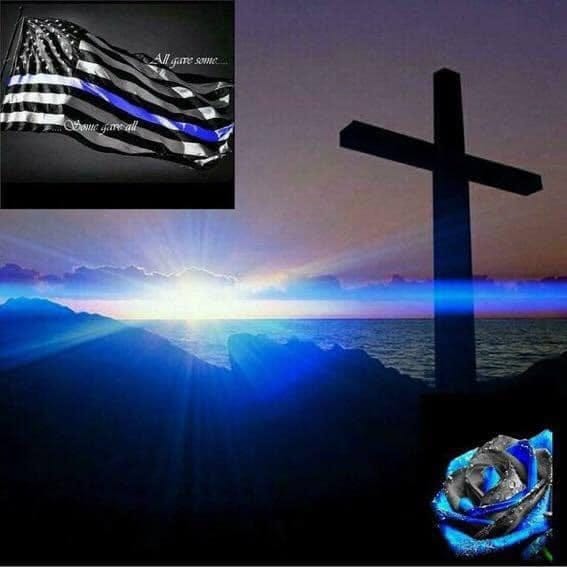
This week, I want to talk about the pictures cops circulate online to show off the fruits of their “labor” — the contraband they seize from detainees. Whether they’re posting flat lays of pre-rolls, dime bags, ecstasy tablets, guns and ammo, “weapons” (ie, flashlight keychains, metal water bottles) or posing with them instead, these images are designed to reinforce our trust in law enforcement and make slam-dunk headlines.
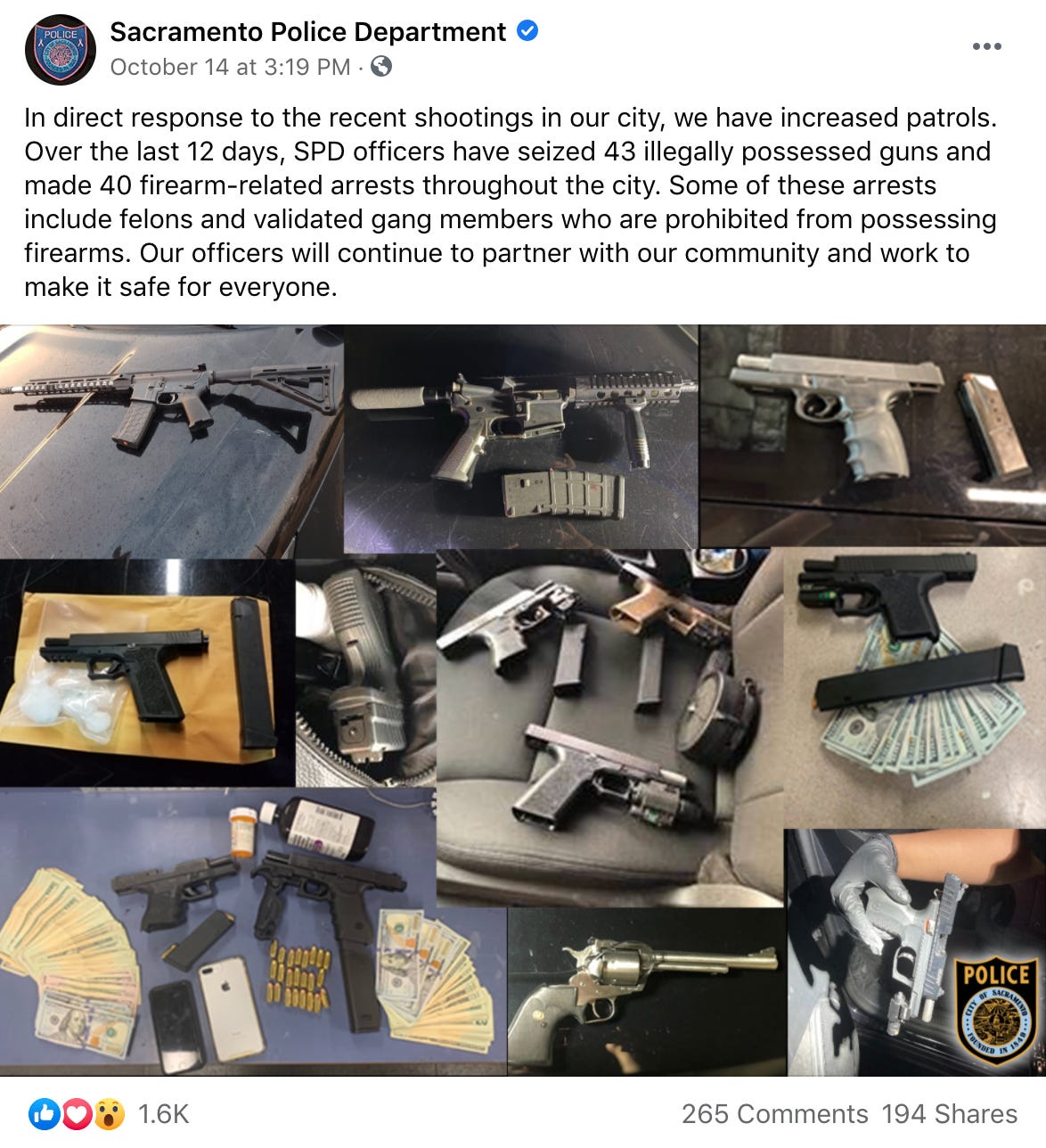
I don’t know if there’s an official term for these pictures — this piece by Andy Wright, which dives into their historical origins, calls them “drug-bust” or “drug-haul” photos. I’m going to lob off the modifier and refer to them as “haul photos,” because like influencers unboxing makeup on IGTV for a PR kickback, cops are absolutely trying to sell us some bullshit we don’t need by showing off on camera.
Historically, police departments and other agencies needed to sell these photos to complicit media entities. Now, thanks to platforms like Facebook and Twitter, where these photos tend to do best, cops can self-publish these photos as frequently as they want, without even the pretense of outside oversight or vetting.
Law enforcement agency social media accounts regularly post these pictures, despite the fact that they also regularly get roasted for them, for two main reasons: to brag and to scare people.
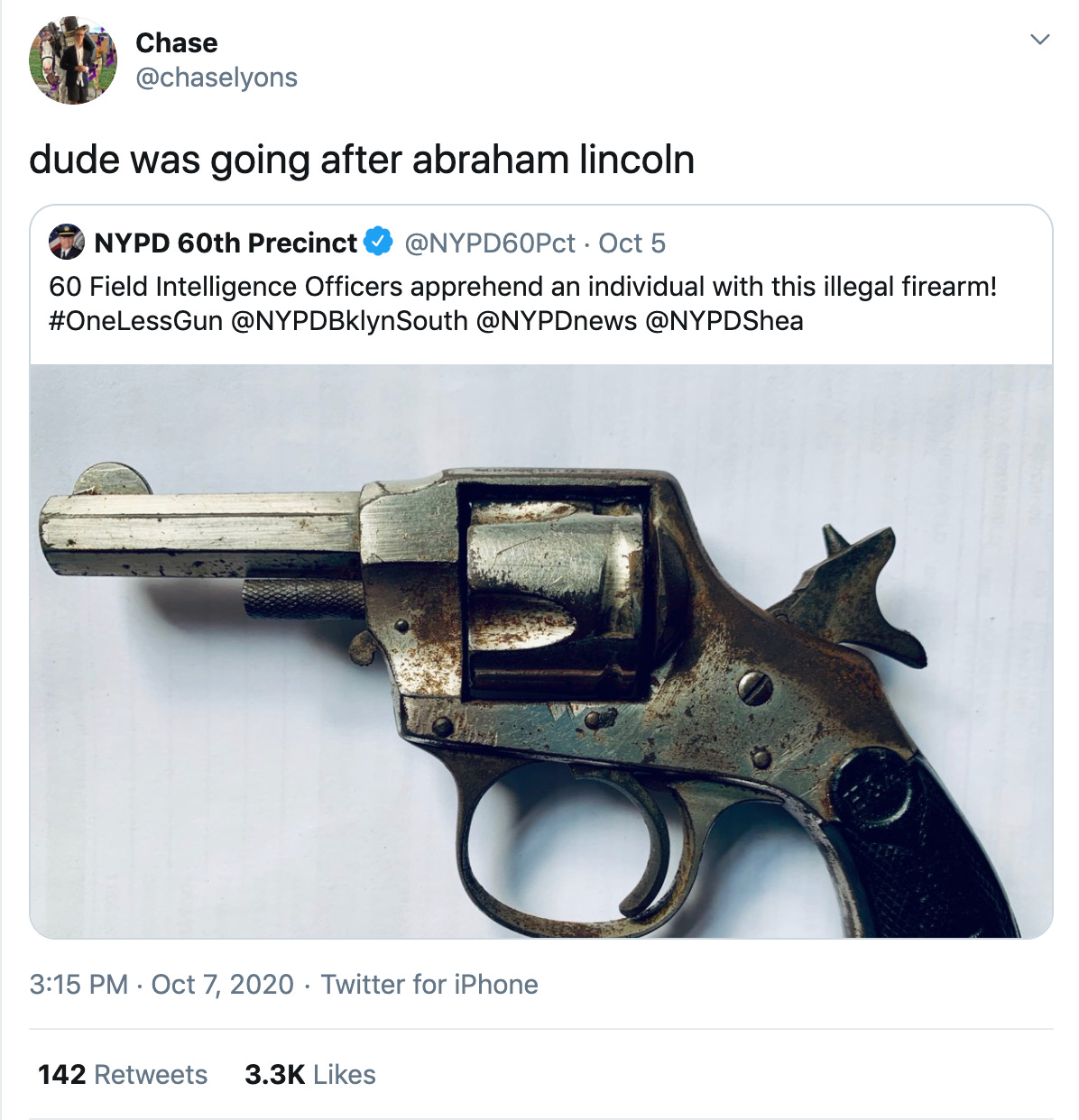
It’s in the interest of the police to do both of these things (sometimes at the same time!) to justify their own existence. By giving us a peek at what’s on the other side of the Thin Blue Line, cops aim to prove they actually do something all day (besides sitting in their cars, perpetuating racism, and getting freaked out at fast food restaurants).
Do anything for clout


In the article on haul photos that I link above, Wright roots the tradition of cops hamming it up on camera with their spoils in the earliest days of the War on Drugs to the 1920s, with NYPD photographers and J. Edgar Hoover kicking off the genre. Basically, haul photo have allow the police to pose as if they’re in the know and in on the action for nearly a century.
Everyone knows that posting pictures of drugs, guns, and criminal activity—plus the wads of cash, exotic pets, fancy cars, etc, that the drug-and-gun lifestyle affords—is a recipe for clout. Pictures of these things are, to use a technical term, “cool,” and people want to look at them. Even the police know this, and they want in on the fun (despite the fact that their literal job is breaking up the party).

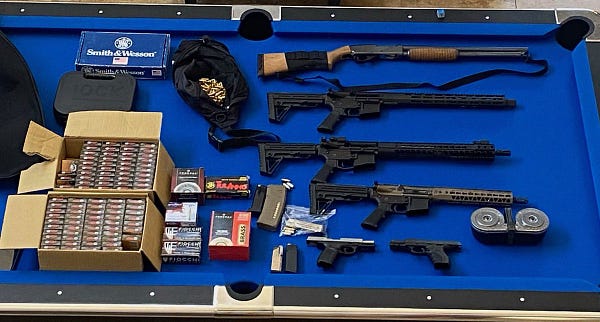
While tapping into these cultural signifiers of cool is one thing, I think there’s also a culture war subtext to these posts. When cops take haul photos, they’re bragging that they’ve taken down the Cool Guy, usurping the drug-dealer-rapper-criminal that our misguided sOcIeTy idolizes—instead of worthy figures like firefighters or pilots or, most importantly, cops.
Plus, based on what we know about the widespread practice of cops plundering evidence lockers and assets seized from arrestees, all the loot they’re showing off online might be theirs at the end of the day anyway. Flex!
Fear Factor


It’s undeniable that the police need the general public to be afraid, very afraid, of what will happen if they aren’t around. A continuous stream of haul photos is an effective scare tactic in that it perpetuates the idea that there is an endless amount of “danger” on “the streets”—danger so real that people often don’t notice or encounter it in a meaningful way unless they’re actively involved in the illicit market!
Cops aren’t posting their haul photos for the people who live in the communities that drugs and gun violence negatively impact. They’re posting for the rubberneckers, the captive audience, the #BacktheBlue fans ready and willing to provide them with the adulation we all turn to social media to receive.
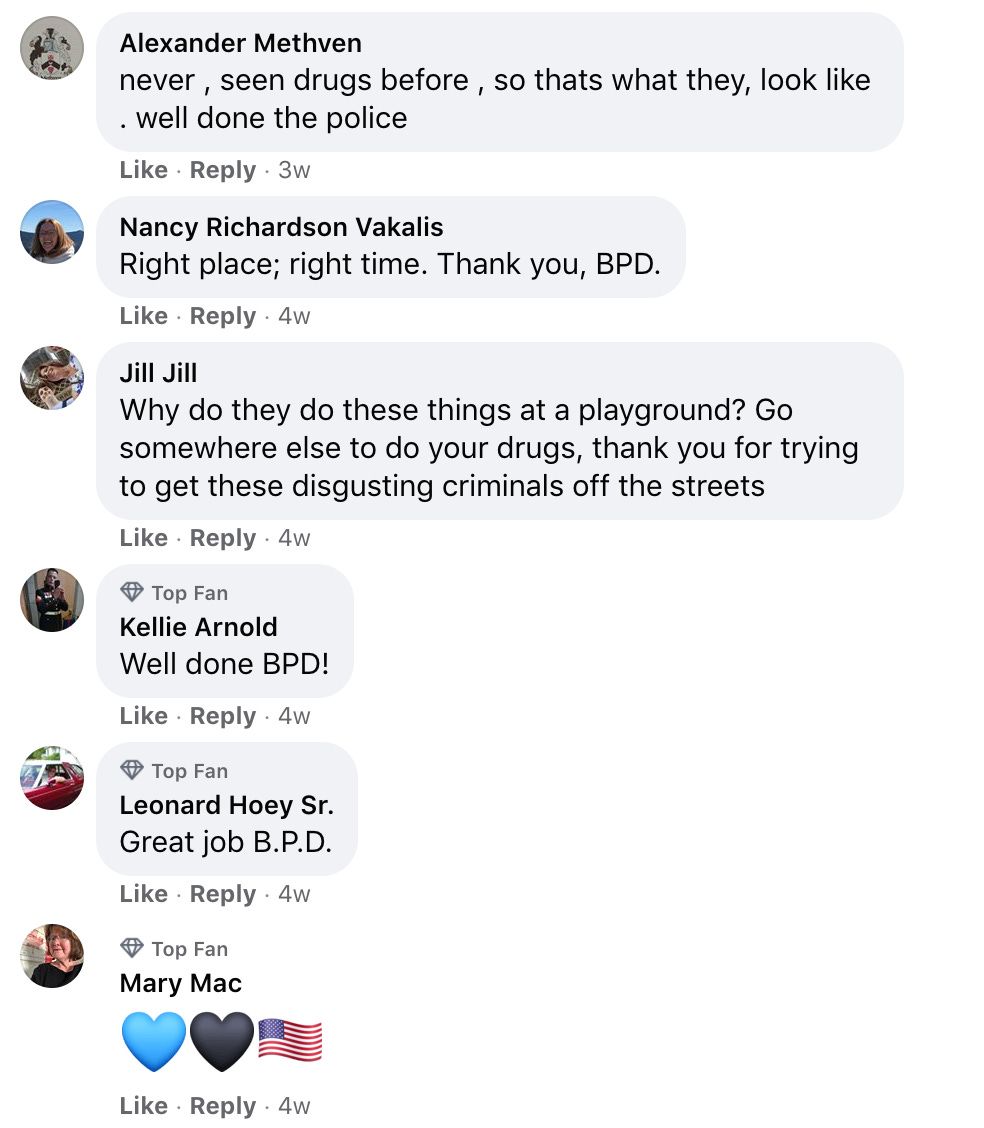
Haul photos are meant to serve as proof of a job well-done by our brave men and women in uniform, and verification of the risks they take every day to protect and serve the general public. (Worth noting that the latest stats show cops spend… 4 percent of their time on duty responding to “violent crime.”) What these photos actually prove is that cops need an endless stream of visual reinforcement to justify their fat salaries and excuse the brutality they commit in the name of law and order.
Blocked and Reported
An investigation on pervasive racism, often expressed on social media, within New York City’s court system dropped last week. According to the New York Times, the report which “found pervasive racism in New York courts, both explicit and implicit, from judges, court officers and lawyers” was conducted in response to a June Facebook post by Brooklyn court officer Terri Napolitano that depicted Barack Obama and Hillary Clinton being hanged. Per the Times, Napolitano is still on paid leave.
On October 2, police chief Jarrad Berkihiser of Lancaster, Pennsylvania was apparently forced to resign over a pro-Trump Facebook comment… from his wife. “why im voting for him again. Same reason as last time… you don’t see him meeting w Jacob Blake’s family or speaking to him by phone…” Mrs. Jarrad commented on a friend’s pro-Trump post. GRAIN OF SALT ALERT: This account has been backed by the local Fraternal Order of Police, so watch this space.
On October 12, a police officer in Pamplico, South Carolina was fired from the Pamlico Police Department over an undisclosed social media post.
Also as of Oct. 12, concerned citizens in Sparks, Nevada are still waiting to hear the results of the city’s investigation into the social media activity of George Forbush, a police officer allegedly posting threats of violence on Twitter. Given the fact the handle in question is @Punisher8502… it feels pretty safe to say a cop is behind comments like: "I am going to build a couple AR pistols just for BLM, Antifa, or active shooters who cross my path and can’t maintain social distancing." Topical!
On October 17, police recruit Joseph Zacharek was fired from his new gig in Lafayette, Indiana after he was outed as a neo-Nazi on Twitter, thanks to past participation in internet forums. According to a local Fox News affiliate, the Lafayette Police Department “promised to learn from the investigation to make sure it doesn’t happen again.” Good luck…
Questions, comments, corrections? (“You don’t know what it’s like to be a police officer” is not a correction.) Shoot me an email at k80way@protonmail.com, or DM me on Twitter.



